Categories
Subjects
Authors
Artists
Venues
Locations
Calendar
Filter
Done
June 15, 2022 – Review
12th Berlin Biennale, “Still Present!”
Jesi Khadivi
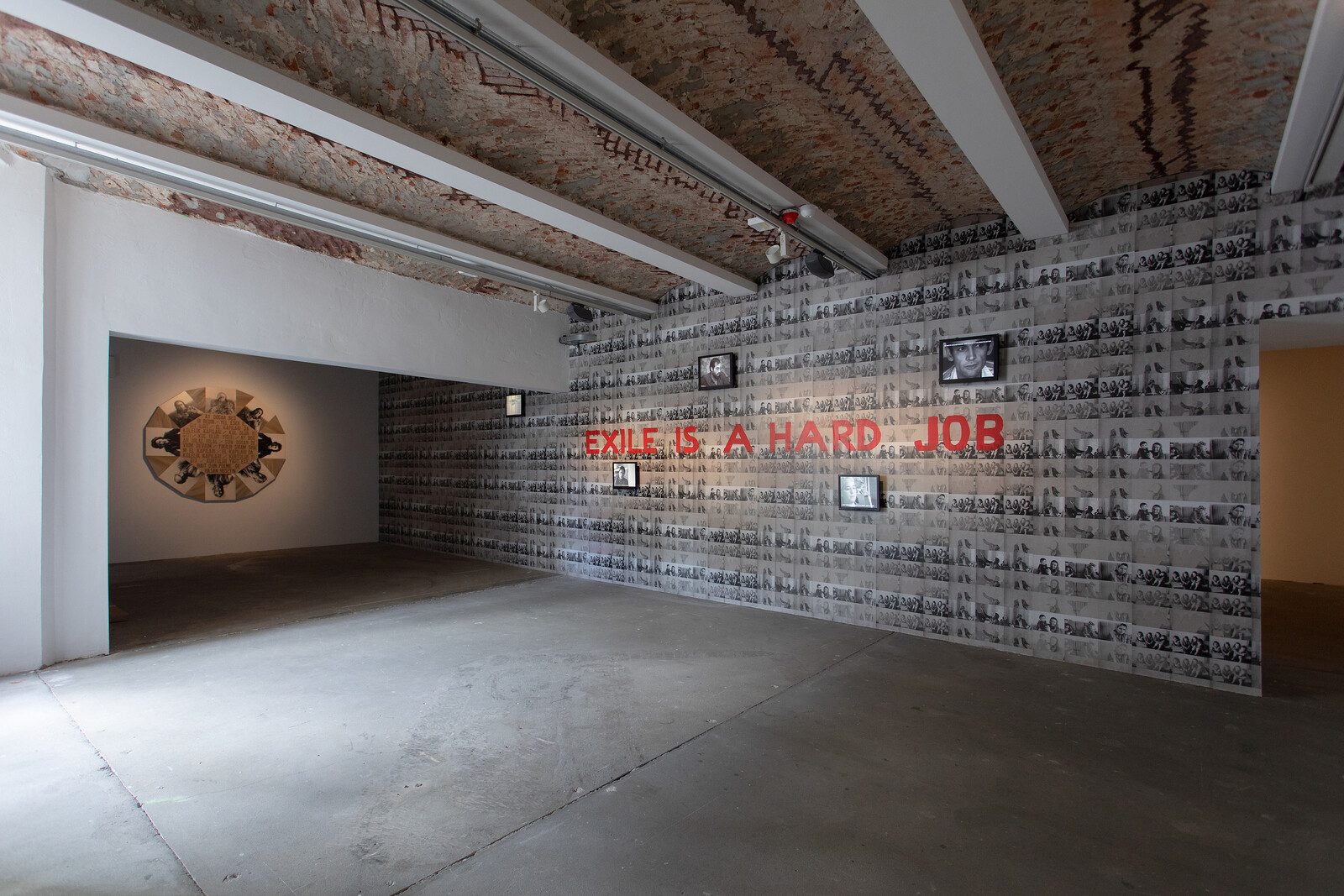
As curator of the twelfth edition of the Berlin Biennale, Kader Attia continues his ongoing engagement with notions of injury and repair. There is precedent for this in his own artistic practice: the sprawling installation The Repair from Occident to Extra-Occidental Cultures (2012) staged reconstructed artifacts from ethnological collections that clearly reveal their stitching and staples, drawing a contrast with Western approaches to restoration that conceal an object’s damage and thereby silence the many stories it might tell. In the series “Repaired Broken Mirror” (2013–21), Attia sutured nondescript fractured mirrors with crude materials like staples or copper wire, a gesture of repair which appeared no less brutal than the act of breaking. The visible scars and reflective surface feel emblematic of this exhibition’s aspirations to hold a mirror to the legacies of colonialism and imperialism, sweeping environmental destruction, racism, sexism, and forced displacement due to war and climate change—and to propose ways forward.
Through works by 82 artists and collectives displayed across six venues, Attia endeavors to foster spaces of “collective speech and reflection” that respond to the accumulated, unhealed wounds that have been rendered invisible by discourses of expansionism, algorithmic governance, and 24/7 capitalism. Working against the universalist claims of …
September 14, 2020 – Review
11th Berlin Biennale, “The Crack Begins Within”
Jörg Heiser
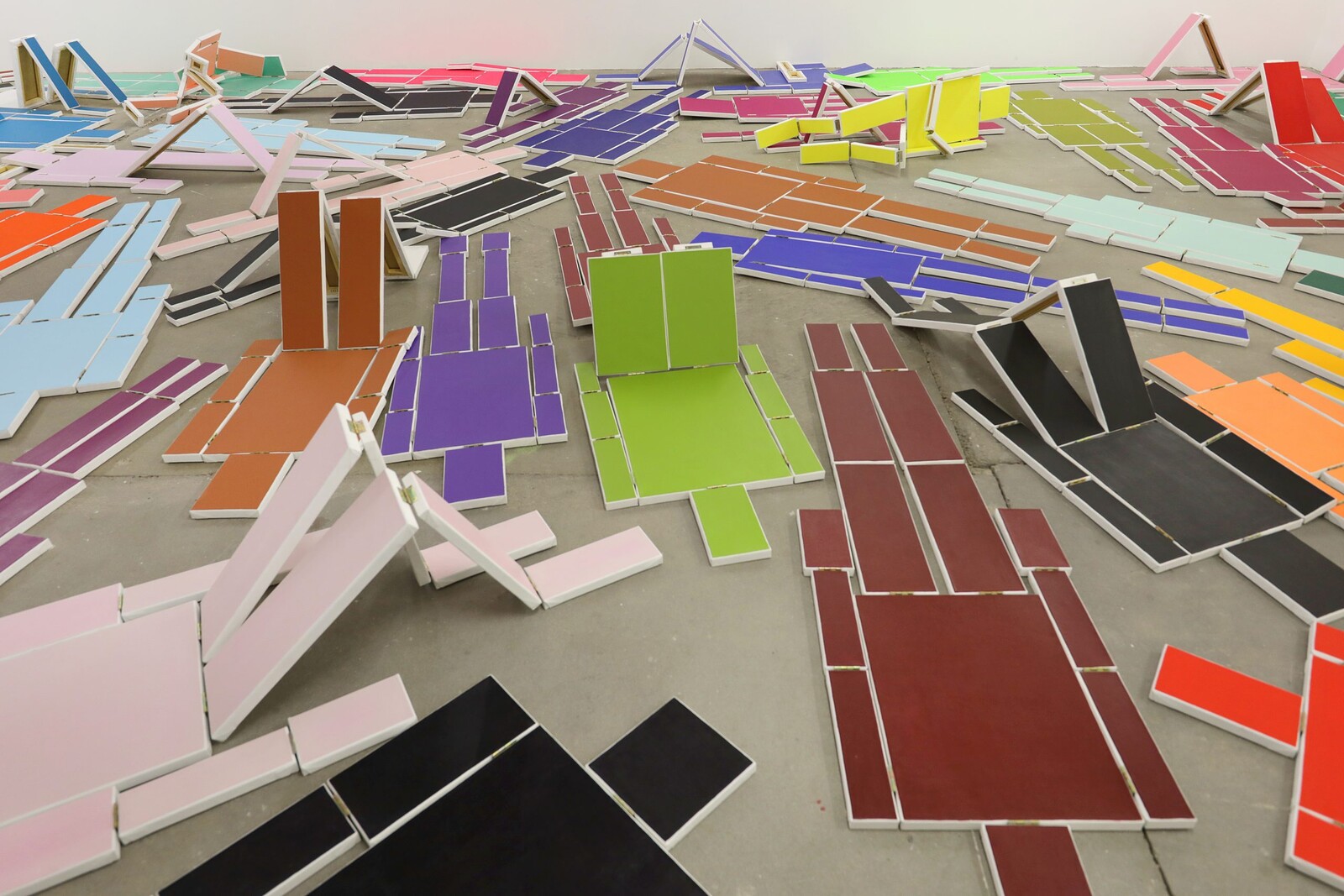
“Here, the concept of ownership is abstracted until it disappears.” This is the official slogan of ExRotaprint: a former print-press factory collectively run as a mix of art studios, workshops, and community initiatives in Wedding, north Berlin, and one of four venues for the 11th Berlin Biennale. For about a year leading up to the exhibition’s opening, the curatorial team—María Berríos, Renata Cervetto, Lisette Lagnado, and Agustín Pérez Rubio—hosted a series of readings, screenings, workshops, and performances here which set the tone. Though interrupted in March by the pandemic that prompted the show’s postponement from June to September, the approach could be summarized as: “Here, the concept of curatorial heroics is abstracted until it disappears.”
Which is to say: this Biennale foregrounds work that addresses socio-political traumas past and present, and the effects of violence inflicted on the marginalized. (This is also how I understand the title “The Crack Begins Within,” borrowed from a line by poet Iman Mersal.) Despite curatorial texts that occasionally wax a little too poetic, the team circumvents the usual pitfalls of self-congratulatory gesturing and puffed-up wokeness that reduce artists and their works to issue-tokens or neo-ethnographic trophies. The works at ExRotaprint point towards the basso …
June 11, 2018 – Review
10th Berlin Biennale, “We Don’t Need Another Hero”
Patrick J. Reed
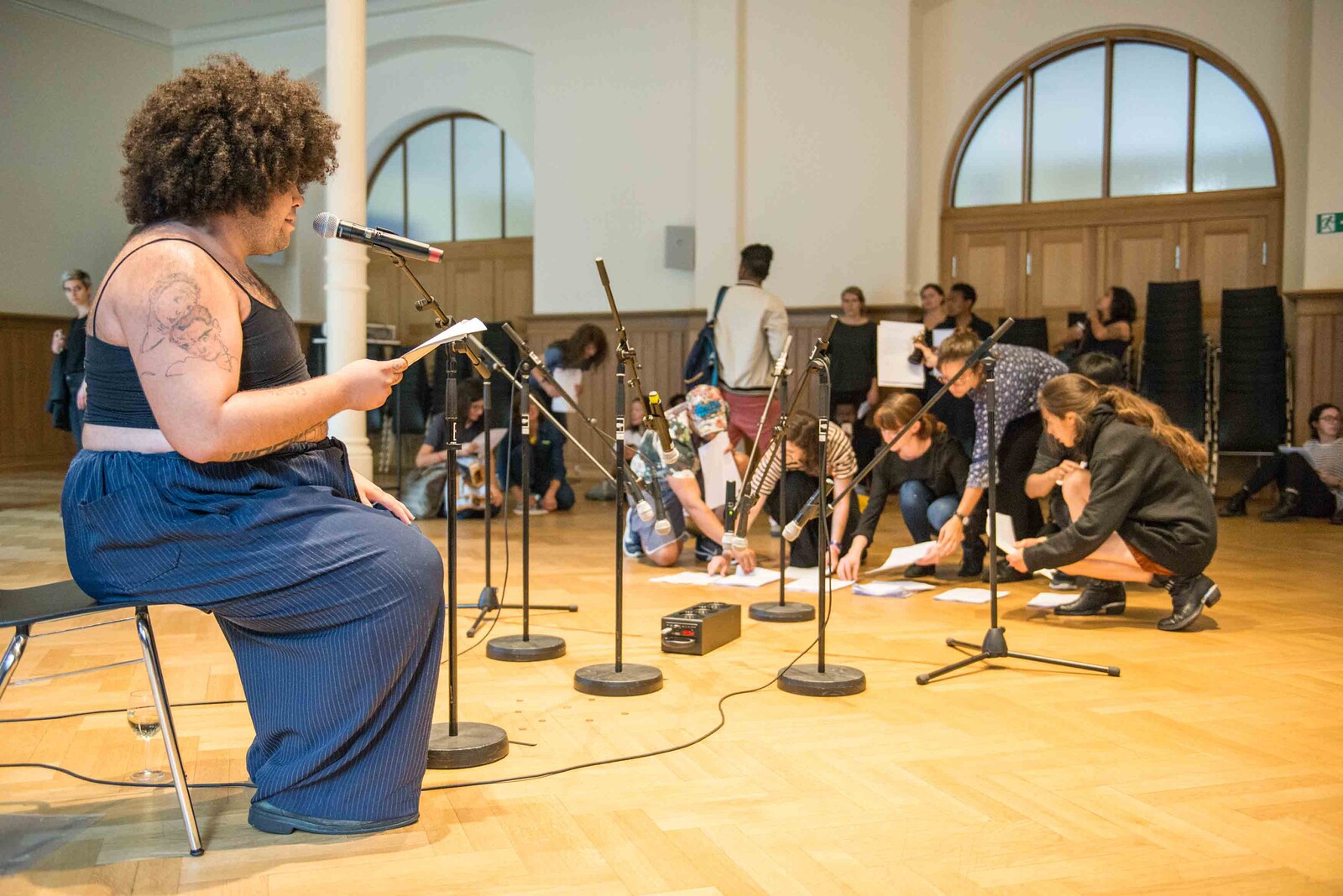
During the press conference for the 10th Berlin Biennale, henceforth snappily referred to as “BBX,” the attendees were given the opportunity to contemplate Hakuin Ekaku’s lesser-known koan—“what is the sound of one person’s inappropriately timed clapping?”
The lone applauder, whose ruckus died away with all the glory afforded a deflating balloon, was prompted by Yvette Mutumba’s statement that, unlike her fellow curatorial team members, who were speaking English, she would be making her opening comments in German. Respect for a host country’s mother tongue notwithstanding, the clapping was a blunder considering the strong international representation in the room and the curators’ refusal “to be seduced by unyielding knowledge systems and historical narratives that contribute to the creation of toxic subjectivities.” Language, of course, is one such system.
For curator Gabi Ngcobo, BBX is entrenched in a war against oppression—and, as the abovementioned faux pas confirms, there are landmines everywhere. It is therefore unsurprising that the accompanying exhibition texts read as though written with an awareness that each word is potentially lethal to their curatorial cause. The authorial challenge was doubtless intensified by the biennale’s sweeping thesis: to ignite “a conversation with artists and contributors who think and act beyond art as they …
June 6, 2016 – Review
9th Berlin Biennale, “The Present in Drag”
Travis Diehl
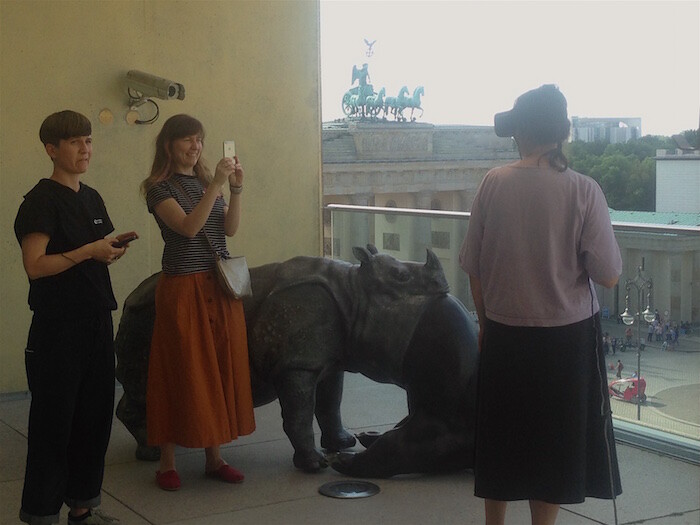
“Advertisting … is the only art form we [in the United States] ever invented.” Gore Vidal
The fourth floor of Berlin’s Akademie der Künste overlooks Pariser Platz: the Brandenburg Gate, the French embassy fringed with barricades, a teeming Starbucks. Tourists mill around the square, while up on the mezzanine, between a set of marble statues of animals improbably swallowing other animals, a queue forms behind an Oculus Rift rig: Jon Rafman’s View of Pariser Platz (2016). At first the rendered scene in the headset matches the architecture and sculptures. A dog gags on a lion, an iguana gulps a sloth. Slowly, the animals start swelling, expelling, gyrating; the view fills with fog. Human figures blow upwards like flapping skins. Soon the pavement and building break apart; the viewer freefalls among the debris, landing, after a moment, among ranks of featureless mannequins… Rafman’s technical hallucination takes roughly three minutes. For three minutes, the setting in all its very real paradox—a symbolic gateway between West and East, Reagan and Gorbachev, also known as the place where Michael Jackson dangled his baby from a balcony—falls away beneath an encompassing, scripted but nonreactive spectacle. Thus the city rebrands itself: a new ad on a …
June 4, 2016 – Review
9th Berlin Biennale, “The Present in Drag”
Tess Edmonson
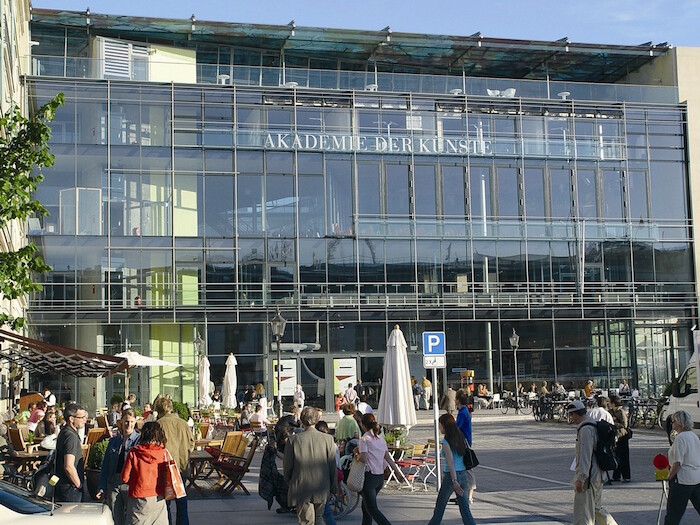
Berlin’s history of internecine violence is visible on its civic surface, a characteristic that holds currency in both mainstream and art tourism; what differentiates these two modes is a style rather than a politics. Who can say what a city means?
Gentrification mistakes lack of capital for lack of life, confuses the unexploited with the uninhabited. Over the course of its 18 years, the history of the Berlin Biennale has paralleled the drastic conversion of its symbolic center—the KW Institute for Contemporary Art and surrounding area on Auguststrasse—from post-GDR bohemia to a neoliberalism fully realized. For this year’s edition of the biennial, the ninth, curators Lauren Boyle, Solomon Chase, Marco Roso, and David Toro (known collectively as DIS) propose to orient audiences differently, moving the exhibition’s main venue to the Akademie der Künste on Pariser Platz, adjacent to the Brandenburg Gate, an area populated mostly by tourists, government officials employed in nearby offices, and police.
The appointment of DIS, best known as the publisher of the eponymous online magazine, exacerbated existing polarities among local artists and producers, where distrust of all that’s mediagenic, internet-literate, or American often barely disguises casual classism, or a nostalgia for the difference the city (and its art …
May 29, 2014 – Review
8th Berlin Biennale
Adam Kleinman

Riddled with countless tributaries, a map of the Amazon River and its drainage basin seemingly presents an image far too complex to be used as the basis of a mnemonic device; however, Emma Hart Willard (1787–1870), a radical American pedagogue and women’s rights advocate, turned explicitly to its topography in order to graph the history of the Roman Empire. Whether or not such didactic approaches assist in retaining cultural memory, Willard’s convoluted representation of a “canonical” history might also belie a subversive want and need to drown out reductive narratives. This year’s Berlin Biennale for Contemporary Art—in a vein not dissimilar to this parallel reading of Willard’s work which is featured in “Double Lives,” a kind of exhibition-within-the-exhibition curated by Artistic Team member Natasha Ginwala—ostensibly claims to redress a spate of historical revisionism found in Berlin today; however, it does so in a rather oblique manner.
Aside from the artworks on view, the implications of curator Juan A. Gaitán’s ambitions for the 8th Berlin Biennale can be parsed through his selection of three different exhibition sites: KW Institute for Contemporary Art, Museen Dahlem – Staatliche Museen zu Berlin, and Haus am Waldsee. Key amongst them, however, is the Museen Dahlem, a …
April 27, 2012 – Review
7th Berlin Biennale
Ana Teixeira Pinto
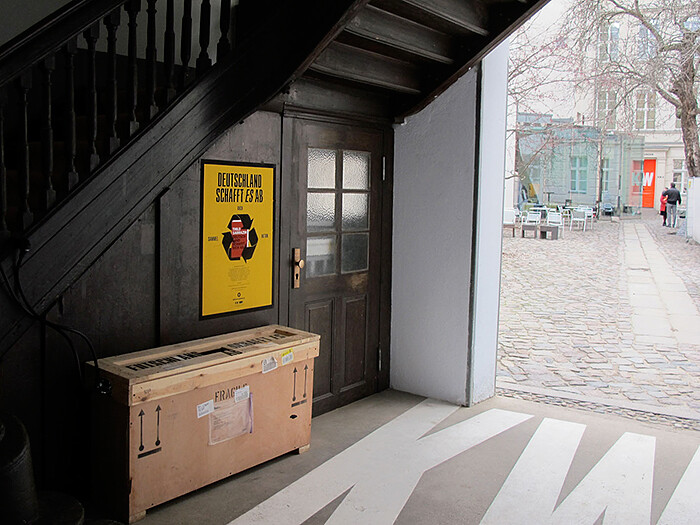
“Forget Fear!” could be the title of Die Hard’s next installment. But it’s actually the title of the 2012 Berlin biennial. The parallels with the “good cop gone rogue” idiom are not accidental. The 7th Berlin biennial, curated by Artur Żmijewski in collaboration with associate curators Joanna Warsza and the group known as Voina seems to be caught in a pragmatic contradiction: it stands for left-wing positions through the enactment of right-wing methods and “vigilante” rhetorics.
The curatorial statement, written by Żmijewski—keeping with the spirit of the communications the biennial has been releasing—begins with a litany of complaints about the inadequacy of art and the weakness of its positions, expressed in a disillusioned, confessional tone, which mirrors the television trope of a lone hero battling a multitude of soul-less bureaucrats and single-minded apparatchiks. “I have been working in art, and in its cause, for years. It has become a way of life for me, life itself, and a passion. For years I have been observing its possibilities and limitations. But a few years ago I stopped ‘needing’ it. I used to like visiting galleries, anticipating the thrill that comes when you see reality filtered though the mind of an artist. Today, …
June 13, 2010 – Review
6th Berlin Biennale, Part 2
Michèle Faguet
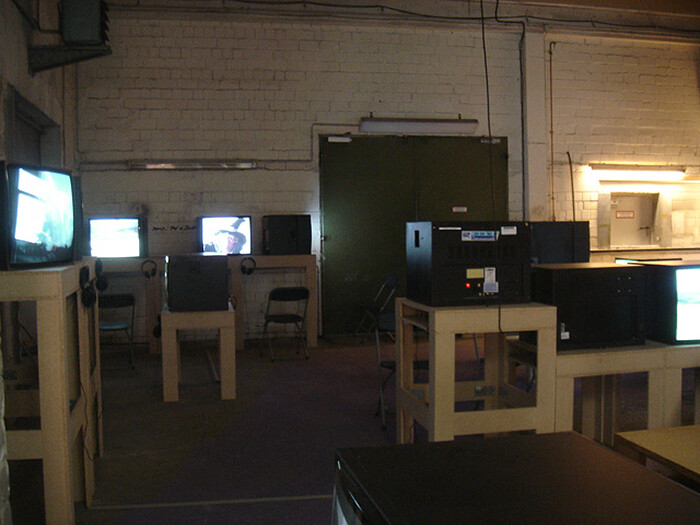
Days 2-3: Thursday, June 10th & Friday, June 11th
Day two began at a nondescript warehouse at Mehringdamm 28 to see an installation of George Kuchar films (selected by film curator Marc Siegel) and a brick, (oddly) chapel-like construction housing new sculptural work by Cameron Jamie. Nestled between parking lots and car-repair shops in an industrial patch that has survived the gentrification of the now semi-posh (and ultra-boring) Bergmannkiez section of Kreuzberg, this venue reminded me of summer in Chelsea in the mid-90s, especially given the rapidly rising heat and humidity, which, as the day wore on, made art-viewing increasingly challenging in a city unprepared for such temperatures. There were twenty-three Kuchar films on view—one of the absolute highlights of this biennale—many of them from his “Weather Diary” series (from the 1980s) that combine cleverly edited footage of approaching tornados outside Kuchar’s cheap motel room with his intuitive and funny commentary. A few hundred meters away, the Cameron Jamie installation consisted of two pitch-black rooms lit only by lanterns provided to a restricted number of visitors allowed to enter at any given time. Jamie himself happened to be around and I overheard him warning one of his companions about the spooky …
June 10, 2010 – Review
6th Berlin Biennale, Part 1
Michèle Faguet
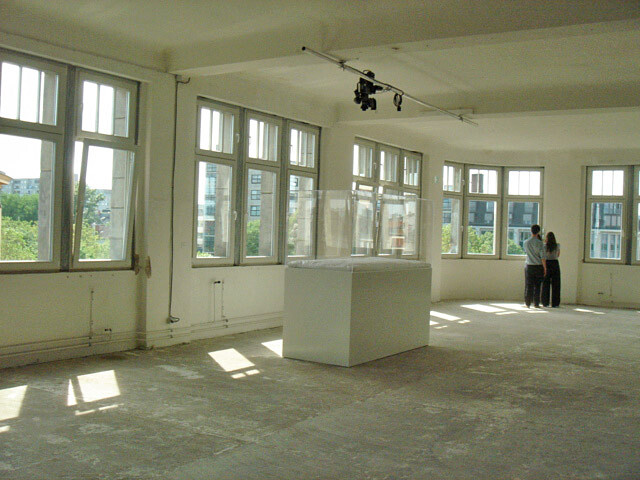
Day 1: Wednesday, June 9th
Curated by Kathrin Rhomberg, the sixth edition of the Berlin Biennale seeks to examine the manner in which art negotiates “reality”—a loaded term, described rather abstractly in the curatorial statement—in a time of historical crisis and renegotiation that begins with the fall of communism and is marked, most recently, by September 11 and the collapse of financial capitalism. With works by forty-five artists from almost twenty countries (the vast majority from Western Europe and the U.S. but with a sizeable number from Eastern Europe), the exhibition is spread out among various venues, most of them in Kreuzberg, in a gesture surely welcomed by many, and consistent with the Berlin art world’s gradual move in the last few years from Mitte (now hopelessly gentrified) to other neighborhoods of the city.
Press accreditation took place in a courtyard lit by unseasonably strong early morning sunshine and was followed by a press conference in which Artistic Director of the German Federal Cultural Foundation Hortensia Völckers candidly discussed the difficulties of finding appropriate venues (the subject of much gossip and speculation in the months preceding the Biennale). Rhomberg expanded on her curatorial premise—abstractly again, although maybe it was the simultaneous translation …